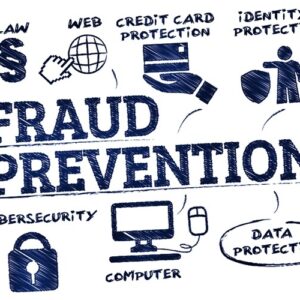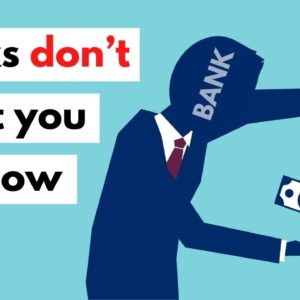
Outline:

1. Introduction
- The rise of budgeting apps
- The paradox: Budgeting apps making us poorer?
- Why this article matters to you
2. What Are Budgeting Apps and How Do They Work?
- The idea behind budgeting apps
- Popular budgeting apps: Mint, YNAB, PocketGuard, etc.
- How they aim to help users save money
3. Understanding Digital Overspending: What It Is and How It Happens
- Definition of digital overspending
- Key factors contributing to overspending
- How budgeting apps can inadvertently encourage overspending
4. The Psychology Behind Budgeting Apps: Are They Setting Us Up for Failure?
- Behavioral psychology and the impact of digital tools
- Cognitive dissonance: Budgeting apps vs. actual spending behavior
- Why users often ignore budgeting app alerts
5. The Convenience Factor: Are We Spending More Because It’s Too Easy?
- Instant gratification and impulsive spending
- How budgeting apps can make spending feel “smaller”
- The illusion of financial control
6. Budgeting Apps and Subscription Culture: A Trap for the Modern Consumer
- The rise of subscription services
- How budgeting apps can downplay the impact of recurring costs
- Hidden fees and the cost of convenience
7. Tracking vs. Managing: Are Budgeting Apps Only Tracking the Problem?
- The difference between tracking and managing your finances
- Why tracking without real action can lead to more debt
- The illusion of control
8. The Disconnection Between Budgets and Real-World Spending
- Budgeting apps’ limited scope
- How the digital divide creates unrealistic expectations
- Why real-world spending habits clash with app-generated budgets
9. Gamification of Budgeting: How It Can Lead to Dangerous Spending Habits
- The impact of gamification in budgeting apps
- The thrill of “winning” by saving: A false sense of achievement
- How gamification can encourage bad spending habits
10. The Impact of Data: Are Budgeting Apps Using Your Information Against You?
- How budgeting apps collect data
- The role of AI in predicting user behavior
- Do these apps encourage overspending by using personalized recommendations?
11. Comparing Budgeting Apps: Which Ones Are More Likely to Encourage Overspending?
- Pros and cons of popular budgeting apps
- Which budgeting apps are guilty of facilitating overspending?
- How to choose the right app that keeps you within your budget
12. Real-Life Stories: People Who Became Poorer Despite Using Budgeting Apps
- Case study 1: The overspending trap of automated savings
- Case study 2: The illusion of “smart budgeting” leading to financial failure
- Case study 3: Budgeting apps ignoring emotional spending triggers
13. Solutions: How to Overcome Digital Overspending
- How to make budgeting apps work for you
- Integrating real-world financial practices with app usage
- How to build a personalized budgeting strategy
14. Alternatives to Budgeting Apps: What Works for Real Financial Control?
- Traditional methods: Pen, paper, and spreadsheets
- Financial advisors vs. digital tools
- Other digital financial tools and techniques
15. Conclusion: Is Digital Budgeting Making You Poorer?
- Summing up the paradox of digital budgeting
- The importance of being mindful with your finances
- Final thoughts on balancing budgeting tools and real-life spending habits
FAQs:
- Are budgeting apps really making me poorer?
- Can budgeting apps cause overspending?
- How do I choose the best budgeting app for me?
- How can I fix my spending habits if I rely on a budgeting app?
- Is it better to track my spending manually than using an app?
Why Budgeting Apps Might Be Making You Poorer: A Deep Dive into Digital Overspending
Introduction: The Paradox of Budgeting Apps
In an age where technology promises to solve most of our problems, it’s ironic that budgeting apps, designed to help us save money, might actually be making us poorer. Sounds bizarre, right? But, as more people turn to apps to track their spending and manage their finances, there’s a growing concern that these digital tools could be reinforcing the very habits they’re meant to correct.
Budgeting apps are marketed as essential tools to help us stay on track with our finances, cut unnecessary expenses, and save for the future. But what if, despite their best intentions, these apps are encouraging us to spend more and ignore the fundamental practices of financial management? This article will explore the reasons behind this paradox, the psychological effects of budgeting apps, and how they may contribute to digital overspending.
What Are Budgeting Apps and How Do They Work?
Budgeting apps have revolutionized the way we manage our finances. These apps link to your bank accounts, credit cards, and other financial accounts to automatically track your transactions. They offer budgeting templates, categorize spending, and even send you alerts about your spending habits. Popular apps like Mint, YNAB (You Need A Budget), and PocketGuard are household names in the world of personal finance.
But how exactly do these apps work? Most apps start by asking for your financial information, syncing with your bank accounts, and categorizing your expenses. They offer you a breakdown of where your money is going, from groceries to subscriptions to dining out. Some apps even give you personalized insights and recommendations on how to save more.
On paper, this sounds great. But in reality, these apps may be focusing too much on tracking and not enough on actively managing your finances in a sustainable way.
Understanding Digital Overspending: What It Is and How It Happens
Digital overspending occurs when individuals make purchases impulsively or excessively in the digital world, often without fully realizing the impact on their finances. With the rise of online shopping, mobile payments, and subscription services, overspending has become easier than ever. Budgeting apps, despite their ability to track expenses, sometimes fail to curb this impulsive behavior.
Why does this happen? The seamless nature of digital transactions makes it difficult to gauge the full extent of your spending. You don’t physically hand over cash, so the act of spending doesn’t feel as real. You’re constantly presented with spending options, often with just one click, and the result is the impulse to spend more.
In the case of budgeting apps, while they might provide alerts or notifications when you go over budget, the system doesn’t always offer a comprehensive solution to stop bad spending habits. Instead, users often get caught in the cycle of tracking expenses without real behavioral change.
The Psychology Behind Budgeting Apps: Are They Setting Us Up for Failure?
The way we respond to budgeting apps is deeply tied to behavioral psychology. Humans often act irrationally when it comes to money. Cognitive dissonance, the psychological discomfort that arises when our behaviors conflict with our beliefs, plays a significant role.
When we receive a notification saying we’re overspending, we might ignore it because the alert feels like a minor inconvenience. The immediate gratification of spending often outweighs the reminder to save. This disconnection between what we know we should do and what we actually do is a central problem with budgeting apps. They don’t always address the emotional and psychological triggers of spending.
Moreover, many users end up viewing budgeting apps as a quick fix to their financial issues, rather than as a tool for long-term habit change. This leads to a cycle of frustration, where the apps are seen as ineffective, and people give up on using them altogether.
The Convenience Factor: Are We Spending More Because It’s Too Easy?
One of the main appeals of budgeting apps is convenience. They allow you to track your spending in real time and make adjustments quickly. But this convenience can come at a cost. Budgeting apps are designed to make spending easier, and this can lead to the illusion that you’re in control of your money, even when you’re not.
The convenience factor encourages users to spend more because it feels effortless. A few taps here and there, and you’ve made a purchase without much thought. This easy access to spending often leads to more impulsive purchases, even when you’re aware of your budget.
Budgeting Apps and Subscription Culture: A Trap for the Modern Consumer
Subscription services have exploded in recent years. From Netflix to Spotify to meal kit deliveries, the number of recurring monthly payments has skyrocketed. Budgeting apps often track these subscriptions, but their impact on your finances is often downplayed. Small, seemingly harmless subscriptions can add up over time, leaving you with little room to save.
Budgeting apps may show you how much you’re spending on subscriptions, but they rarely offer actionable solutions. You might get a notification that you’re over budget, but that’s where the app’s guidance typically ends. The problem is that these apps don’t always address the underlying issue of subscription fatigue, where users are overwhelmed by the number of recurring payments they’ve signed up for.
Tracking vs. Managing: Are Budgeting Apps Only Tracking the Problem?
There’s a significant difference between tracking and managing your finances. Budgeting apps excel at tracking, but they don’t always help you manage your spending. They can alert you when you’ve exceeded your budget, but unless you actively change your behavior, these alerts don’t do much.
Tracking is passive; it only tells you what’s happening. Management, on the other hand, involves actively taking control and changing your habits. While budgeting apps may provide insights, they don’t always guide you in a meaningful way on how to make adjustments.
The Disconnection Between Budgets and Real-World Spending
Budgeting apps are digital tools that operate in a vacuum, disconnected from the reality of daily life. They may show you a neat pie chart of your spending, but they don’t factor in things like unexpected expenses, emotional purchases, or changes in lifestyle.
This disconnection creates unrealistic expectations. Users may feel like they’re sticking to their budgets, only to realize later that they’ve overspent in ways the app didn’t account for.
Gamification of Budgeting: How It Can Lead to Dangerous Spending Habits
Many budgeting apps incorporate gamification elements, offering rewards or milestones when you meet certain goals. While gamification can make managing money more engaging, it can also lead to unhealthy spending habits. The pursuit of rewards can make saving feel like a game, reducing the seriousness of financial management.
This sense of competition or accomplishment can give users a false sense of financial security, even though their spending may still be out of control.
The Impact of Data: Are Budgeting Apps Using Your Information Against You?
Budgeting apps use sophisticated algorithms to analyze your spending habits and make personalized recommendations. While this data-driven approach can be helpful, it can also encourage overspending. The more the app knows about your habits, the better it can push products or services that align with your preferences, often leading you to spend more.
This personalized approach might feel helpful, but it’s crucial to ask: Are budgeting apps promoting your best financial interests, or are they using your data to encourage behaviors that benefit the app itself?
Comparing Budgeting Apps: Which Ones Are More Likely to Encourage Overspending?
Not all budgeting apps are created equal. Some are more focused on helping users track spending, while others offer a more comprehensive approach to managing finances. Apps like Mint and YNAB provide users with helpful tracking tools, but they may not always offer solutions to help control impulsive spending.
Real-Life Stories: People Who Became Poorer Despite Using Budgeting Apps
Many users have reported falling into financial trouble despite using budgeting apps. The following real-life stories demonstrate the pitfalls of relying too heavily on digital tools without addressing the root cause of overspending.
Solutions: How to Overcome Digital Overspending
To make budgeting apps work for you, it’s crucial to integrate real-world financial practices with the digital tools. Regularly review your spending, take action to cancel subscriptions you don’t need, and make sure your budgeting habits align with your financial goals.
Alternatives to Budgeting Apps: What Works for Real Financial Control?
Alternatives to Budgeting Apps: What Works for Real Financial Control?
While budgeting apps have grown in popularity, they aren’t the only tools available to manage your finances effectively. If you’re feeling like digital tools aren’t giving you the control and results you’re looking for, it might be time to explore alternative methods. These alternatives can help you take charge of your finances in a way that aligns better with your personal habits, preferences, and financial goals. Let’s take a look at some of these real-world financial control methods.
1. Pen and Paper Budgeting: The Classic Approach
Before smartphones and apps, people were successfully managing their finances using simple pen and paper. This approach still works today and has several advantages over digital tools. By physically writing down your expenses, you are forced to slow down and think about every purchase you make. It also provides a sense of control and satisfaction as you cross out or check off items on your budget list.
How it works:
- Start by writing down your income and expenses for the month.
- Break down categories such as rent, utilities, groceries, transportation, entertainment, etc.
- Track your spending daily and adjust your expenses as needed.
- At the end of the month, review your spending and make changes for the next month.
Advantages:
- Full control over your budget
- Encourages mindful spending
- No reliance on technology
- Easily customizable
Downside:
- It can be time-consuming to track expenses manually, and it’s easy to forget small purchases.
If you’d like a guide to starting pen-and-paper budgeting, check out this complete guide to budgeting with pen and paper.
2. The Envelope System: A Physical, Cash-Based Approach
The envelope system is a tried-and-true method for managing your finances by using cash for each category of spending. In this system, you allocate a specific amount of cash to different envelopes for various expenses (e.g., groceries, dining out, entertainment). Once the money in an envelope is gone, you’re done spending in that category for the month.
How it works:
- Set a budget for each category of expenses.
- Place the designated amount of cash into separate envelopes.
- As you spend, take the money out of the corresponding envelope.
- Once an envelope is empty, you cannot spend any more in that category for the month.
Advantages:
- Helps curb overspending by physically limiting your funds for each category
- Encourages a stronger connection with your money
- Easy to use for those who struggle with credit card debt
Downside:
- Not suitable for people who prefer digital payments or those with few cash transactions.
- Difficult to manage recurring bills or online purchases.
To understand how the envelope system works, read this guide on the envelope method.
3. Spreadsheets and Excel: Budgeting with Customization
Spreadsheets, particularly those made in Microsoft Excel or Google Sheets, are another excellent alternative for those who want more flexibility in how they manage their finances. These platforms allow you to create fully customized budgets and track every penny, without the constraints of app templates or restrictions.
How it works:
- Create a spreadsheet with columns for income, expenses, and categories.
- Input your monthly income and add each expense as it occurs.
- Use formulas to calculate totals, track savings goals, and compare against your planned budget.
- Regularly update and review the sheet to ensure you’re on track.
Advantages:
- Complete flexibility with budget categories and tracking
- Can be updated and adjusted in real-time
- No need for a third-party app or service
Downside:
- Can be time-consuming if you don’t already have experience with spreadsheets.
- Requires a bit of technical knowledge to set up formulas and calculations.
If you’re new to budgeting with Excel, this step-by-step guide can help you get started.
4. Financial Advisors and Coaches: Personalized Guidance
If you’re feeling overwhelmed by managing your finances on your own, consulting a professional financial advisor or coach can be a game-changer. Financial advisors and coaches can provide personalized advice tailored to your goals, helping you build a custom plan that aligns with your lifestyle and income.
How it works:
- You meet with a financial advisor or coach to discuss your financial goals.
- They assess your financial situation, including debt, savings, and investments.
- Based on your goals and priorities, they will create a comprehensive financial plan.
- They help you manage debt, save for the future, and invest wisely.
Advantages:
- Personalized, expert advice for your specific needs
- A professional who can help you navigate complex financial decisions
- Ongoing support to adjust your plan as needed
Downside:
- Financial advisors and coaches often charge for their services.
- It requires you to be transparent and open about your finances.
READ MORE: To find a certified financial planner near you, check out this guide on selecting a financial advisor.
5. The 50/30/20 Rule: A Simple, Effective Budgeting Method
The 50/30/20 rule is a simple yet effective budgeting method where you allocate your income into three broad categories: needs, wants, and savings/debt repayment. This approach works well for those who want to keep things simple but still maintain control over their spending and saving habits.
How it works:
- 50% of your income goes toward essential needs (housing, utilities, groceries, etc.).
- 30% goes toward discretionary spending (entertainment, dining out, etc.).
- 20% goes into savings and debt repayment.
Advantages:
- Simple and easy to follow
- Encourages a balance between enjoying life and saving for the future
- Works well for those who want a quick way to manage their finances
Downside:
- May not be detailed enough for those with complex financial situations (i.e., high debt or large savings goals).
Learn more about how to implement the 50/30/20 rule with this helpful guide to budgeting.
6. Financial Journaling: A Mindful Approach
Financial journaling is the practice of writing down your spending habits, thoughts, and emotions related to money. It encourages reflection on your financial choices, helping you understand why you make certain spending decisions. This process can be eye-opening and help uncover the emotional triggers behind your financial habits.
How it works:
- Set aside time to write about your financial journey regularly.
- Document how you feel about your financial situation, your goals, and your challenges.
- Reflect on your spending and saving habits to identify patterns.
- Use your journal to explore how your emotions impact your money management.
Advantages:
- Helps you become more mindful and aware of your financial behaviors
- Encourages deeper reflection and personal growth
- Simple and doesn’t require digital tools
Downside:
- It can be time-consuming and may not work for everyone.
Discover how journaling can improve your financial awareness in this article on financial journaling.
7. Using Cash-Only for Non-Essential Purchases
For many people, simply switching to a cash-only system for non-essential purchases can drastically improve their spending habits. The act of physically handing over cash creates a sense of loss that digital payments lack, encouraging more mindful spending.
How it works:
- Set a fixed monthly budget for non-essential purchases (such as entertainment, eating out, etc.).
- Withdraw the amount of cash you’ve allocated and use only that cash for discretionary purchases.
- When the cash is gone, you’re done spending for the month.
Advantages:
- Helps curb impulsive spending and gives you a tangible sense of your financial limits.
- Works well for people who struggle with credit or debit cards.
Downside:
- Doesn’t work well for online purchases or larger transactions that require digital payments.
Read more about the benefits of going cash-only in this article on cash-only budgeting.
Conclusion
While budgeting apps are certainly convenient, they aren’t always the best solution for everyone. Alternative approaches, from the envelope system and spreadsheets to the 50/30/20 rule and financial coaching, can provide you with the financial control you need to make better decisions with your money.
Ultimately, the key to successful financial management is finding the method that works best for you and your lifestyle. Whether you opt for a high-tech solution or something more traditional, the goal is the same: to control your finances, save money, and reduce the stress that often comes with financial uncertainty.
While budgeting apps are useful, they aren’t the only solution. Alternative methods, such as traditional pen and paper tracking, spreadsheets, and even financial advisors, may offer more control and personalized guidance.
READ MORE: Are Your Daily Habits Ruining Your Finances? Critical Behavioral Triggers You MUST Avoid to Safeguard Your Wealth and Achieve Financial Freedom!
Conclusion: Is Digital Budgeting Making You Poorer?
Budgeting apps, while well-intentioned, can sometimes exacerbate the very financial issues they’re meant to solve. By encouraging overspending, promoting convenience over financial discipline, and relying too much on tracking instead of real management, these apps can inadvertently make users poorer.
FAQs
- Are budgeting apps really making me poorer?
Yes, in some cases, budgeting apps may encourage impulsive spending or fail to address the underlying habits that cause financial strain. - Can budgeting apps cause overspending?
Absolutely. Digital tools can make spending feel more manageable, leading to overspending without considering long-term financial consequences. - How do I choose the best budgeting app for me?
Look for apps that not only track your spending but also offer actionable advice and tools to manage and control your expenses. - How can I fix my spending habits if I rely on a budgeting app?
Combine digital tracking with real-world financial practices like cash envelopes or periodic financial reviews to stay on top of your finances. - Is it better to track my spending manually than using an app?
It can be. Manual tracking can give you a more tangible sense of your spending habits, making it easier to control your finances.






